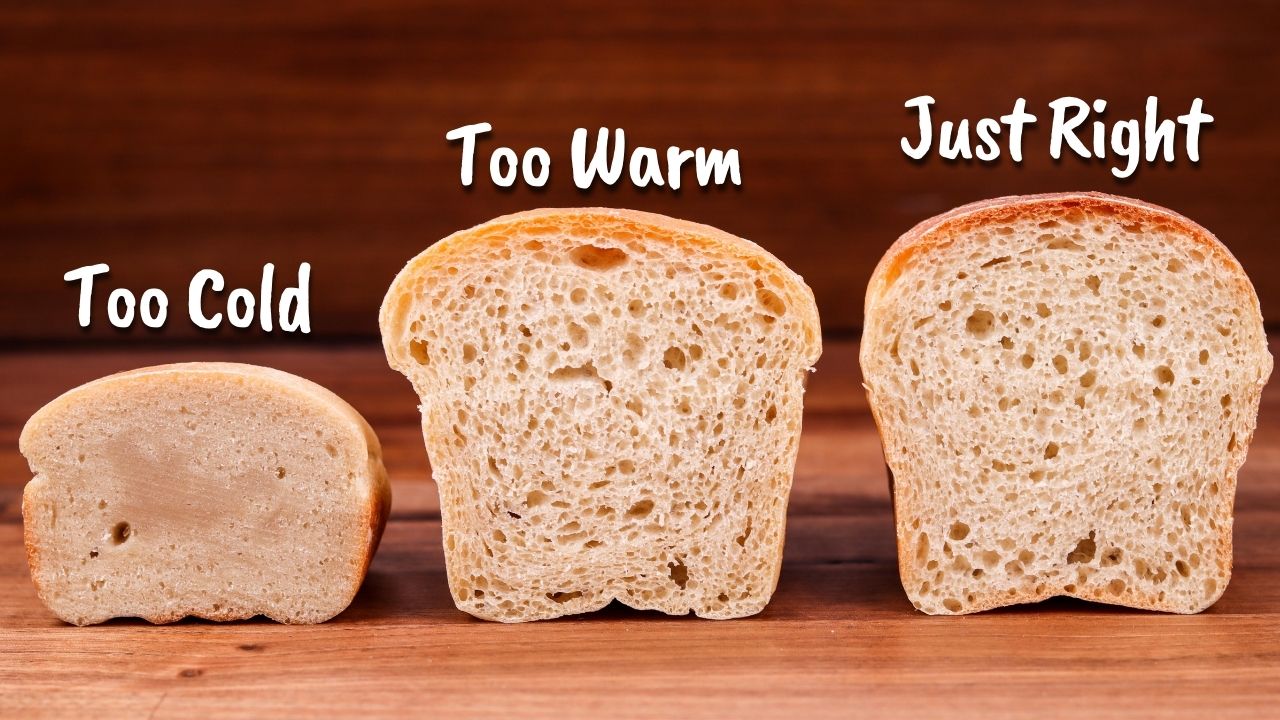Temperature control is one of the most important parts of breadmaking. I sometimes even say that temperature is one of the most important ingredients although it is not an ingredient at all.
I have made videos detailing the process of temperature control and demonstrated formulas that can be used for calculating the temperature of ingredients to reach a certain final dough temperature.
The ideal temperature for your bread dough will be determined by the temperature of the environment around it. If you live in a place with a hot climate or if you just have a warm kitchen, then you will need to make a cooler dough. If you live in a cold climate or if your kitchen is cold, then you will need to make a warmer dough.
Often, we must adjust the temperature of our dough when baking through the seasons.
Sticking to certain temperatures and staying in control makes the process of breadmaking predictable and consistent. For the most part the ideal temperature for fermenting wheat-based bread dough is between 24C – 26C (75F -79F).
I know that a regular white loaf with 1.2% yeast should go through bulk fermentation at 24C (75F) in about 3 hours. So, if my kitchen is around that temperature, then aiming for a dough temperature of the same degree will make the dough rise in that time. This allows me to plan my day around that loaf of bread.
Knowing that I can also speed up or slow down the process by adjusting the final temperature of the dough. If my kitchen is cooler, then I will make sure to raise the dough temperature or if I’m at home all day and not in a hurry, then perhaps I will make a cooler dough and leave it in a cool room to take its time and be ready whenever.
I’m sure you can see what I mean about being in control. The bread should not be in charge.
There are other benefits to temperature control other than just the timing of fermentation. I wish I could make bread in just 30 minutes and have it the same as the one that takes several hours.
Time = flavour, texture, colour, and keeping quality. The longer a dough ferments the more flavour it develops. It will have a more substantial texture with more ‘bite’ and character to it. The crust will caramelize and become beautifully golden brown and crispy. And when it comes to dough that is fermented for extended periods of time the built-up acidity makes it stay fresh for longer.
On the other hand, bread that is fermented quickly lacks flavour, can have a pale and soft crust, and will go stale quicker too. This is not always a bad thing and there are certainly cases where a quick fermentation is appropriate. In the case of enriched dough containing fats, eggs, sugar, and flavourings there is not always a need for a long fermentation as the bread should be soft and have a light flavour to let the flavours of the added ingredients take centre stage.
At the end of the day taste is subjective and how you want your bead is up to you. If you understand what you are doing you can play around with it and make it yours.
To learn more about dough temperature control click here.
To learn more about dough temperature when using a preferment click here.
Watch the video here



